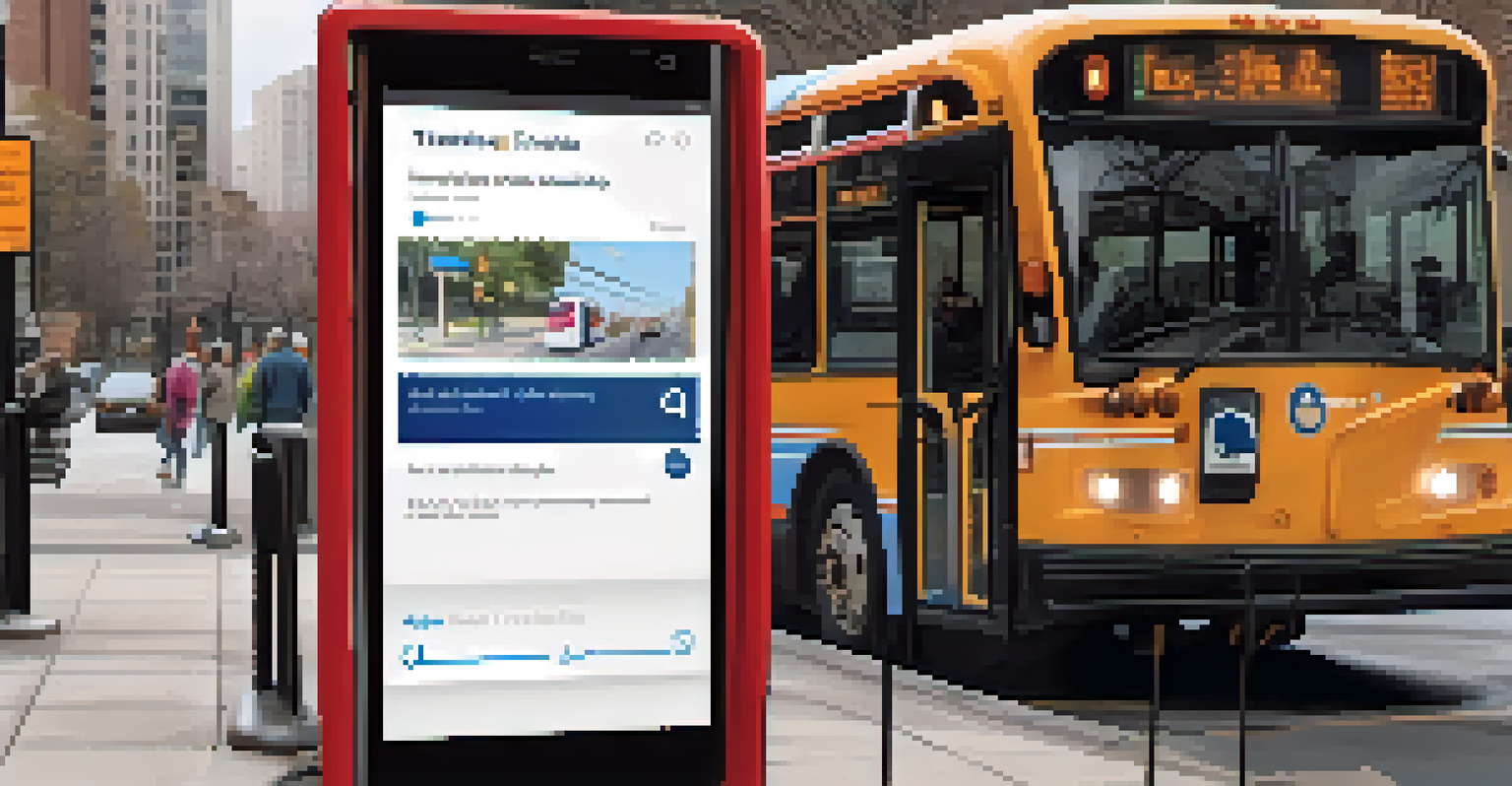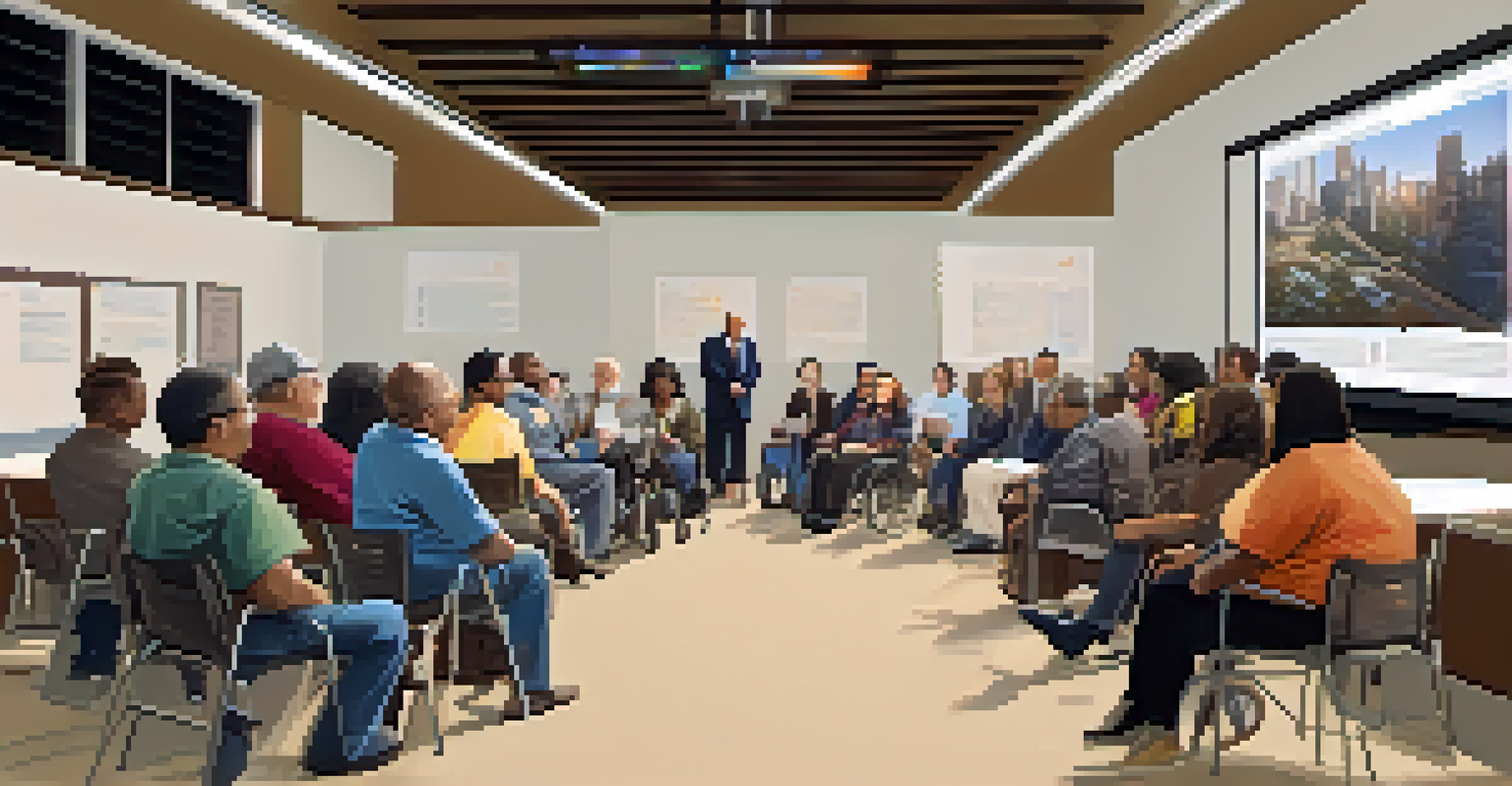Chicago's Public Transit: Reviews from Disabled Riders

Understanding Accessibility on Chicago's Transit System
Chicago's public transit system, including buses and trains, aims to be accessible to everyone, including disabled riders. This is crucial for individuals who rely on public transportation to navigate the city. However, accessibility features can vary significantly between different routes and stations, making it essential to understand what’s available.
Creating an accessible public transit system in Chicago is a collective effort that requires input from disabled riders, advocacy groups, and transit authorities.
Many stations are equipped with elevators, ramps, and designated seating, but not all of them meet the same standards. For instance, some older stations may lack these features, creating challenges for riders with mobility issues. This inconsistency can lead to frustration, as disabled riders may plan their journeys based on the assumption that all stations are equally accessible.
Overall, while Chicago has made strides in improving transit accessibility, continued efforts are necessary to ensure that every rider can confidently navigate the system without facing unexpected obstacles.
Real Experiences: Riders Share Their Stories
Disabled riders often have unique experiences when using public transit in Chicago, and sharing these stories highlights both successes and challenges. For example, one rider shared how helpful bus drivers can be when they assist with boarding and exiting the bus. These positive interactions can make a significant difference in a rider's experience.

Conversely, others have reported difficulties, such as broken elevators at train stations or inadequate space for wheelchairs on crowded buses. These frustrations can lead to missed appointments or social events, reinforcing the importance of reliable transportation. Each story sheds light on the diverse challenges faced by disabled riders.
Access Varies Across Transit System
Chicago's public transit accessibility features differ significantly between routes and stations, creating challenges for disabled riders.
By amplifying these voices, we can better understand the real-world implications of transit accessibility and advocate for necessary improvements.
The Role of Technology in Enhancing Accessibility
In recent years, technological advancements have played a vital role in improving accessibility within Chicago's transit system. Mobile apps, for instance, offer real-time updates on bus and train locations, making it easier for disabled riders to plan their journeys. These tools provide vital information that helps riders navigate the system with more confidence.
By amplifying these voices, we can better understand the real-world implications of transit accessibility and advocate for necessary improvements.
Additionally, some apps include features specifically designed for users with disabilities, such as audio descriptions or alerts for upcoming stops. These enhancements create a more user-friendly experience and empower riders to take control of their travel plans. However, not all riders may be tech-savvy, which highlights the need for continuous education and support.
The integration of technology into transit services is promising, but ensuring that all riders can access and utilize these resources is essential for true inclusivity.
Public Transit Safety: A Concern for Disabled Riders
Safety is a paramount concern for all public transit users, but it can be especially challenging for disabled riders. Many disabled individuals report feeling vulnerable while waiting for buses or trains, particularly during off-peak hours. The lack of adequate lighting and security at certain stations can exacerbate these feelings of unease.
Moreover, the unpredictability of other passengers can also pose safety risks. For instance, crowded spaces can make it difficult for those using mobility aids to maneuver comfortably. This reality emphasizes the need for improved safety measures and greater awareness among all transit users.
Technology Enhances Travel Experience
Advancements like mobile apps provide real-time updates and features for disabled users, improving their confidence in navigating public transit.
By addressing these safety concerns, we can create a more welcoming and secure environment for disabled riders, encouraging them to use public transit confidently.
Advocacy Groups: Driving Change for Disabled Riders
Advocacy groups play a crucial role in amplifying the voices of disabled riders and pushing for necessary changes within Chicago's transit system. These organizations work tirelessly to identify issues and advocate for improvements, ensuring that the needs of disabled individuals are prioritized. Their efforts often lead to fruitful collaborations with transit authorities.
For instance, some groups have successfully lobbied for better training for bus and train operators, focusing on how to assist disabled riders effectively. These training programs can lead to more compassionate and informed interactions, ultimately enhancing the overall transit experience. Advocacy also helps raise public awareness about the challenges faced by disabled riders.
Through continued advocacy and community engagement, we can create an environment where all riders feel heard and valued.
The Future of Transit Accessibility in Chicago
As Chicago continues to evolve, the future of transit accessibility looks promising yet challenging. Ongoing investments in infrastructure and technology are essential to ensure that the city’s public transportation system meets the needs of all riders. This includes not only upgrading existing facilities but also planning new developments with accessibility in mind.
Moreover, engaging disabled riders in the planning process can provide valuable insights that lead to more effective solutions. Their firsthand experiences and suggestions can guide transit authorities in making informed decisions. It’s crucial that these voices are included in conversations about the future of transit in Chicago.
Safety Concerns for Disabled Riders
Disabled individuals often feel vulnerable on public transit, especially during off-peak hours, highlighting the need for better safety measures.
With a commitment to inclusivity and continuous improvement, Chicago can lead the way as a model for accessible public transit.
Conclusion: A Collective Effort for Inclusive Transit
Creating an accessible public transit system in Chicago is a collective effort that requires input from disabled riders, advocacy groups, and transit authorities. While progress has been made, there is still much work to be done to ensure that every rider can navigate the system without barriers. It’s essential for all stakeholders to collaborate in addressing the challenges and implementing effective solutions.
Every story shared by disabled riders adds to the narrative of what needs to change, and these insights should be at the forefront of discussions about transit improvements. By fostering an inclusive environment, we can empower disabled individuals to utilize public transit confidently and independently.

In conclusion, Chicago has the opportunity to set a standard for accessible public transit, but it’s up to all of us to advocate for the changes needed to make this vision a reality.